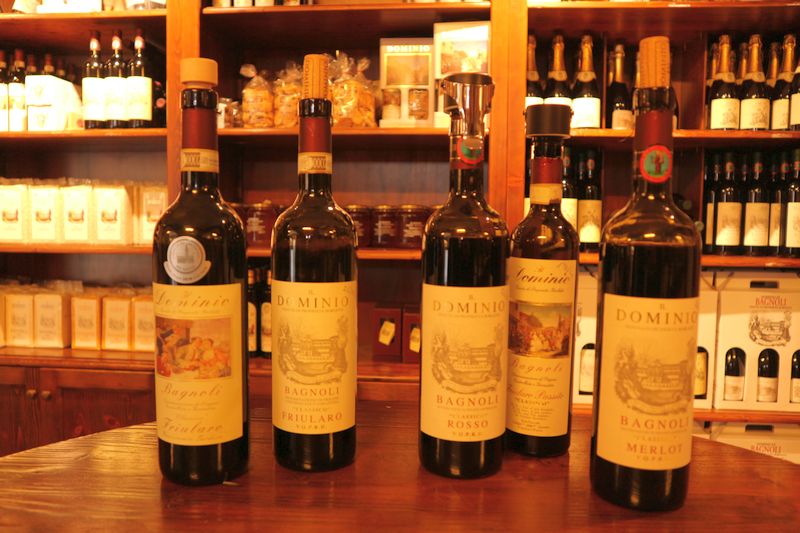LA BELLA VITA

Venice & Lagoon, Bianca Canal, Po Valley
Up to 20 guests
Charters and Cabin cruises
Themed Cruises: Family, Gardens, Golf, Opera, Wine


Italy is known for being one of the most stylishly creative countries in the world. It may be of little surprise that Italy has one of the world's richest variety of individual wine styles, distinctive terroirs and indigenous grape varieties. The country's best wines have a vivacity, originality, and flair all of their own.
With this, it is little wonder that the colonizing Ancient Greeks called Italy "Oenotoria", the land of wine. 20% of the world's wine comes directly from Italy's vineyards; there are over one million throughout the entire country.
After defeating the Carthaginians, the ancient Romans began organizing vineyards in the 2nd century BC. Shortly thereafter, the Romans provided technological advancements in barrel-making and bottling, so we know that wine was clearly on their minds. At this time, Italy was using much of its coastline to host wine-making plantations run by slaves, and wine-making became so popular that Italy was running out of land for other agricultural purposes. In AD 92, Emperor Domitian closed some of the plantations in order to provide land for food production. Italians were so proud of their wine that the Romans prohibited any other provinces from producing it. It was many years later that the Roman Empire relaxed its laws, allowing the rest of Europe to produce wine.
Even today, there is very little of Italy that is not, at least marginally, wine country. In terms of geography, Italy is especially suited for wine production with their well-exposed slopes, sunshine and a temperate climate. The country's long spine of mountains reaching south from the shelter of the Alps almost to North Africa, means there can hardly be a more desirable combination of altitude, latitude, and exposure for vines to grow on. Many of Italy's soils are volcanic, much is limestone, and there is a plentiful supply of gravelly clay. However, even with such variety, generalization seems futile. If there is anything lacking, it is order.

The Langhe is known for producing some of Italy's best wines
Italy uses an esoteric labelling system much like that of France and cultivates a vast assortment of grape varieties. Its wine labels are distinctly imprecise. Their chief problem being a sometimes-impenetrable confusion of names, with an obscure town often the only geographical reference. Beginning in the 1960s, the Italian government undertook the monumental task of devising an answer to France's Appellation d'Origine Contrôlée system and the DOC (Denominazione di Origine Controllate) was created. This system was complete with boundaries, maximum yields and specified grape and production methods. They later created a superior form of DOC called DOCG (Denominazione di Origine Controllate e Garandita), which not only controlled but also guaranteed the origin, and they have increasingly awarded it to premium wine bottles since the 1980s.
There was a time when all Italy's best wines were red, but this is no longer the case. Italy learned to make "modern" Italian white wines in the 1960s. In the 1980s, winegrowers added back the character that was lost and, by the late 1990s, succeeded in producing fresh, crisp, and elegant white wines.
In 1992, Italy passed a law to further restructure the whole system of classification with tighter restrictions, including maximum permitted yields, a system that steadily decreases from the pinnacle of DOCG to DOC, and then down to Italy's version of IGP (Indication of Geographic Protection). Like France's Vin de Pays, Italy's Idicazione Geografica Tipica (IGT) wines can use the geographical and varietal name and vintage. Of the over 60 IGTs produced in Italy, by far the most common are those carrying the name of one of Italy's twenty regions, which have appeared on an increasing percentage of labels.
Currently, there are approximately 600 grape varieties for producing table wines, vermouth and cooking wines from these 20 major regions. Despite this, with 77% of Italy's territory covered by hills and mountains, its terroir is influenced by three seas: the Tyrrhenian, Adriatic, and Ionian. This explains the great level of diversity the country's wines deliver, and why so many unique grape varieties have developed over time, leading Italy's top wines to have a vivacity, originality, flavor and flair all of their own.